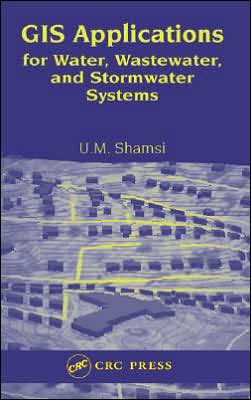The book first describes GIS, detailing its importance and explaining how to avoid potential pitfalls via a needs analysis study. It then describes GIS-related technologies that are crucial in applications development: remote sensing; DEM data; GPS; Internet applications; and mobile GIS. The final ten chapters focus on the "Four Ms" of the water industry–Mapping, Monitoring, Modeling, and Maintenance–applications that define the most important activities for efficient management of water, wastewater, and stormwater systems.
Promoting a performance- (or outcome-) based style of learning, each chapter first states learning objectives and later concludes with a chapter summary and questions. The text encourages more effective and natural inductive study by first presenting case studies, then explaining procedures. This volume supplements the text with numerous maps, tables, and illustrations.
The book first describes GIS, detailing its importance and explaining how to avoid potential pitfalls via a needs analysis study. It then describes GIS-related technologies that are crucial in applications development: remote sensing; DEM data; GPS; Internet applications; and mobile GIS. The final ten chapters focus on the "Four Ms" of the water industry–Mapping, Monitoring, Modeling, and Maintenance–applications that define the most important activities for efficient management of water, wastewater, and stormwater systems.
Promoting a performance- (or outcome-) based style of learning, each chapter first states learning objectives and later concludes with a chapter summary and questions. The text encourages more effective and natural inductive study by first presenting case studies, then explaining procedures. This volume supplements the text with numerous maps, tables, and illustrations.

GIS Applications for Water, Wastewater, and Stormwater Systems
452
GIS Applications for Water, Wastewater, and Stormwater Systems
452
Product Details
| ISBN-13: | 9780849320972 |
|---|---|
| Publisher: | Taylor & Francis |
| Publication date: | 01/27/2005 |
| Pages: | 452 |
| Product dimensions: | 6.20(w) x 9.30(h) x 1.10(d) |
